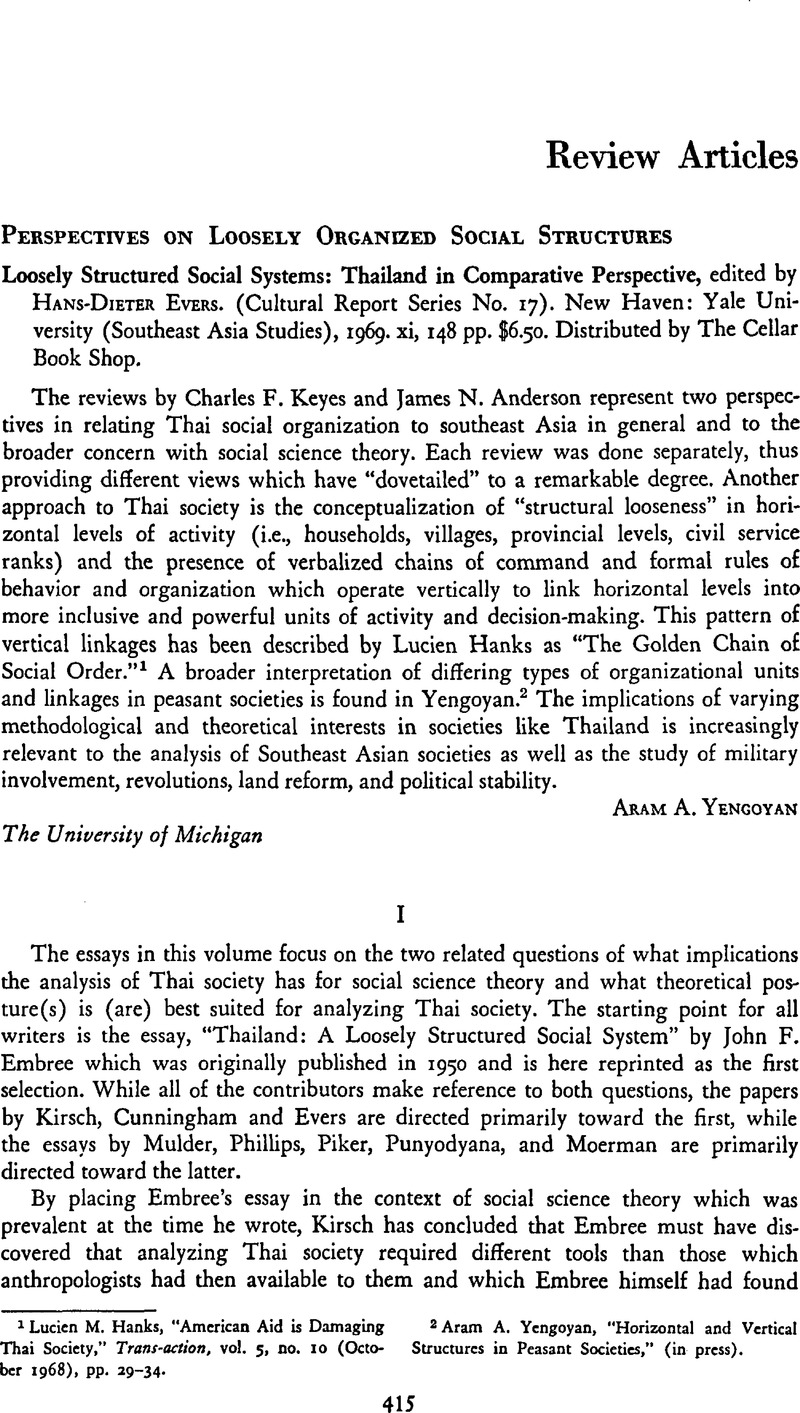No CrossRef data available.
Published online by Cambridge University Press: 23 March 2011

1 Hanks, Lucien M., “American Aid is Damaging Thai Society,” Trans-action, vol. 5, no. 10 (10 1968), pp. 29–34.Google Scholar
2 Yengoyan, Aram A., “Horizontal and Vertical Structures in Peasant Societies,” (in press).Google Scholar
3 See, especially, Brown, Keith, “Dōzoku and can Anthropologist, vol. 68, 1966, pp. 1129–1151). the Ideology of Descent in Rural Japan,”Google Scholar
4 However, I do not believe that the characterization can be extended to all sectors of rural Thailand. In a recent paper, I have suggested that at least two different models of peasant society, “the Central Thai type” and “the Northeastern type” are necessary to cope with differences in rural Thailand (Keyes, C. F., “Local Leadership in Rural Thailand,” Proceedings of a Conference on Local Authority in ThailandGoogle Scholar, ed. by Fred von der Mehden, forthcoming). A forthcoming volume of ethnographic sketches of different villages in Thailand, edited by Clark Cunningham, should help establish some of the parameters of variation in Thai peasant society.